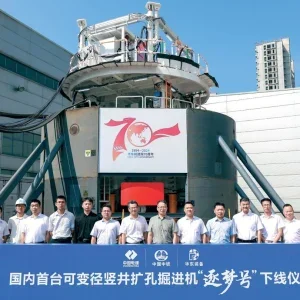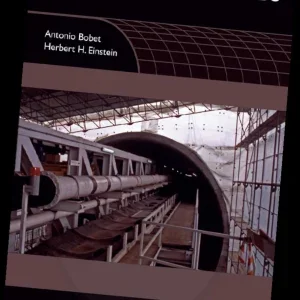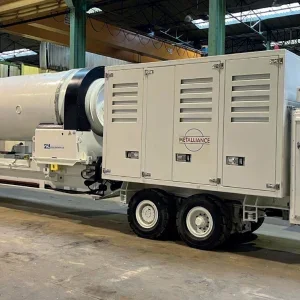In 1928 construction started on the Irvington Tunnel to help deliver water to residents of the San Francisco Bay Area. Since its completion, the region’s population has grown so much it hasn’t been possible to take the tunnel out of service for repairs—doing so would severely impact the water supply.
Now it’s 2012 and the tunnel hasn’t been inspected since 1966.
Located on the southeast side of the Bay, near the city of Fremont, the tunnel is framed by the Calaveras fault to the east and the Hayward fault to the west. With one major earthquake the tunnel would be rendered useless.
The Irvington Tunnel is not alone in reaching the end of its useful life. The San Francisco Public Utilities Commission (SFPUC) is embarking on a USD 4.6bn improvement program to upgrade its entire aging Hetch Hetchy system. As part of this infrastructure program a new tunnel has been designed to replace it, and to withstand a major earthquake.
When the New Irvington Tunnel is complete, it will carry 320 million gallons of water, but it will have little effect on capacity as it replaces the old tunnel. The purpose of the project, and all projects in the program, is to provide a seismically reliable water transmission system that’s capable of sustaining an earthquake, able to carry water within 24 hours and able to return to maximum service in 30 days. SFPUC put the project out to bid in January 2010, and announced a joint venture of Southland Contracting and Tutor Perini as the lowest bidder at USD 226.6M in April. Construction work began in September of last year, and completion of the tunnel is expected in May/June of 2014. Hatch Mott MacDonald is providing construction management services for the project.
The lay of the land
The contractor will construct the 3.5 mile (5.6km) New Irvington Tunnel parallel to the existing tunnel. On average the distance between the two is between 150 to 200ft (45.7 to 61m). Initially URS Corporation and Jacobs Associates had designed the tunnel for TBM excavation. The TBM would start at the Alameda West Portal, the primary work site, and do the 3.5-mile (5.6km) drive for the tunnel, finishing at the Irvington portal.
However, during the design period, boreholes gave unexpected results.
“By about 35 per cent design, they got additional boring/ground data that convinced the design team that it would be wiser to go through conventional type construction,” says David Tsztoo, senior project manager with the SFPUC. “We started thinking in terms of roadheaders and some limited drill and blast. So there was a major shift in the scope of the project at that time to convert the design from TBM to one that would be roadheaders.”
Once the design team knew the tunnel would be excavated by roadheader rather than TBM, another portal was added to the alignment at Vargas. “They developed the concept that the contractor can do more tunnel headings from the Vargas shaft as well as from any of the portals,” Tsztoo explains.
Working from two headings at once, the Southland/Tutor Perini JV has the option to run three roadheaders if necessary. Adding the Vargas portal also reduces the construction activity at the Irvington portal, which is located in the middle of a neighborhood of about 100 households. At this site, only up to 500ft (152m) of tunnelling is allowed if needed.
“From the most basic level, the tunnel is designed to have the most minimal activity as possible at that one tunnel site, given the community,” says Betsy Rhodes, Sunol Regional Communications Liaison, SFPUC. “It’s tight. It’s crowded. Literally the people’s backyards look right out at the job site. The majority of the tunnel construction will happen from the intermediate Vargas shaft and the main work shaft at Alameda West.”
Tucked into part of a cloverleaf exit/entrance ramp for the 680 Freeway, the Vargas work site is shaped much like a teardrop. Comprising roughly 2.5 acres, operations above ground in this small space are tight. The contractor completed excavation of the 120ft (36.6m) deep shaft, with a 41ft (12.5m) diameter, in late March last year.
In total the tunnel will be 18,660ft long, and there is a distance of roughly 14,440ft (4.4km) between the Alameda West and Vargas portals. For the majority of the alignment the grade is 0.125 per cent with an increase in the last 2,000ft to 2.95 per cent. There are several gentle curves, one vertical, and three horizontal.
The new and the old
The New Irvington Tunnel will be between 30ft (9m)—at the portals—to 700ft (213m) below the surface. Geology in the area varies and difficult ground conditions are expected, ranging from very weak to strong rock. The alignment crosses seven zones of seismic secondary faults where squeezing ground is anticipated. Geology along the alignment includes Briones Formation (Tbr, as indicated on the geologic profile), Cretaceousage sandstone and shale (Ks) and Tice shale (Tt). Near the Vargas shaft there are areas of Claremont formation sandstone and siltstone (Tcs) and shale and chert (Tss).
“Part of the reason for going to conventional tunnelling was because it can handle different types of ground better, including probing, grouting the ground, mapping the ground,” explains project manager Michael Cash, of the Southland/Tutor Perini JV. “We’ll know exactly where the faults are. Going with the roadheader and drill and blast approach enables us to handle all of those conditions.”
Another factor that highlights the need to change from a TBM to roadheaders is that high groundwater inflows are expected. “There are very detailed records from when they built the tunnel starting in 1928, and so they knew at what precise points they had flushes of water, which has been very helpful in designing,” Rhodes adds.
For the construction, dewatering facilities are being set-up to control groundwater in flows ahead of tunnel excavation. At the same time it’s a large concern for the SFPUC, which owns the subsurface easement through which the existing and new tunnels go, but underneath private property relying on groundwater wells.
“Initially there was distress resulting from previous tunnel construction where there was significant ground water loss,” says Francis Zamora, public outreach consultant with the project.
The SFPUC has developed individual ground water management plans for 33 property owners within the project area explaining what would happen in the event of groundwater loss as result of the project. “Out of 33 there are only seven that we feel really are going to be impacted,” says Dan McMaster, project construction manager at Hatch Mott MacDonald.
Pre-mitigation measures are planned for those seven properties including setting up additional tanks on the surface for which water can be trucked in to fill on a daily basis. “Once the tunnelling underneath the valley is done we hope some of the ground water will come back, but as soon as we get that final lining in then the water table will start rising again.”
The contractor is excavating the tunnel to a 13ft (4m) diameter in a modified horseshoe pattern. The interior diameter of the tunnel will be 8.5ft (2.6m). While the contract had been bid with several options for the final lining, at the time of T&TI’s visit to the New Irvington Tunnel’s work sites, final negotiations were underway for an alternative.
One of the options in the contract was a cast-in-place lining with one steel pipe in the seven sections of the fault zones—this would be about 3,000ft (914m) of welded steel pipe. Other options include reinforced concrete pipe with the welded steel pipe in the fault zones and a pre-stressed concrete cylinder pipe lining.
During the bidding process the contractor asked if welded steel pipe could be used throughout the tunnel, but needed to wait until after the project had been awarded to see if it was feasible, at the client’s request. Since then the Southland/Tutor Perini JV has proposed a welded steel pipe option all the way through the tunnel, which would provide an impermeable lining with welded joints. Negotiations were finalised in April and steel pipe supplied by Northwest Pipe will be used throughout.
Alameda West
In late March last year an Antraquip AQM 150 began excavation at the Alameda West Portal. The largest of the three worksites; workers moved about the staging area, surrounded by water supplies and ventilation awaiting installation. It was a sunny day but hot on the heels of a few record-breaking rainy days.
The JV had the option of lining the tunnel with shotcrete or using steel ribs, which it has chosen and is installing 4ft (1.2m) apart. Shotcrete is applied to the face only if it is going to be left for any time.
For pre excavation grouting there are two probes out in front at all times. The contractor can probe up to 150ft (45.72m) but a 20ft (6.1m) bulkhead must be maintained at all times. “And then if we do encounter water, if it’s over 20gpm [75.7L], they can grout with microfine cements along the perimeter to reduce the inflow of water into the heading and also for some ground modifications if we hit bad ground,” McMaster explains.
It’s too early to tell what lengths will be probed and it will also depend on the type of ground. It won’t be until late this summer that Southland/Tutor Perini reaches the first of the seven fault zones.
Located in Sheridan Valley, it’s about 3,500ft (1.06km) away from the Alameda West Portal. How the contractor will handle these zones depends on the water. In the event of badly fractured ground, the support spacing will be reduced from four to 2.5ft (1.22 to 0.76m), explains Cash. On average he expects the project will see rates of 20ft (6.1m) per day, but tough geological sections will be much slower.
The AQM 150 has gathering arms that pull spoil onto a conveyor, which empties into muck cars. Once the material is out of the tunnel and loaded onto trucks it is taken to designated dumping areas.
All equipment specified in the contract is explosion proof because there is a potential for both methane and hydrogen sulfide in the tunnel. The contractor is monitoring the gas as required for tunnels classified as potentially gassy. In the event the tunnel is reclassified, not having permissible equipment could have halted the project three to four months for retrofitting, explains McMaster—who notes construction work in the 1930s on the existing Irvington Tunnel encountered gas as well.
Another roadheader, a Mitsui Miike S200 was launched from the Vargas shaft having arrived from Japan the first week of May. Tunnelling operations will be the same at the Vargas as the Alameda portal, except that a 160t crane is being used for muck removal. A 50,000lb excavated the Vargas shaft and a concrete was floor laid. Construction started in late 2010 on the 120ft (36.58m) deep shaft made up of 67 secant piles. “We surveyed every single pile to guarantee that it didn’t diverge from where it was supposed to be,” Cash says. “It’s actually very accurate. We didn’t have to re-drill any piles at all.”
The JV used a special sonar survey, he explains. “We backfill the hole with water and probe down the center and it will sense each pile’s case before we pour the concrete. It sensed where that casing was and gave a measurement at different points to tell how far it deviates from the surface.”
By monitoring the divergence during the shaft excavation, the contractor could drill down to relieve any water pressure behind the secant piles. The shaft excavation was about 27 to 29m of rock. Instead of using drill and blast, a rock hammer was used on the excavator that chipped out the rock.
The Vargas shaft Figure 1, work sites along the tunnel’s alignment Roadheader and drill and blast methods were chosen to better cope with the different types of ground Figure 3, The tunnel will have a steel pipe lining Figure 2, alignments of the existing and New Irvington Tunnels Construction work on the original Irvington tunnel in 1931






